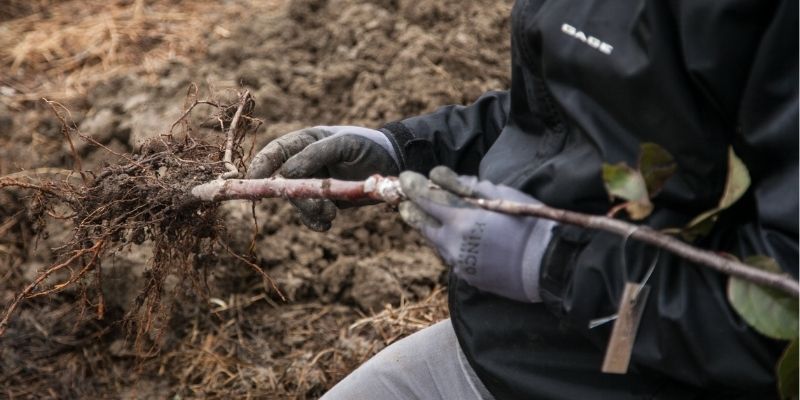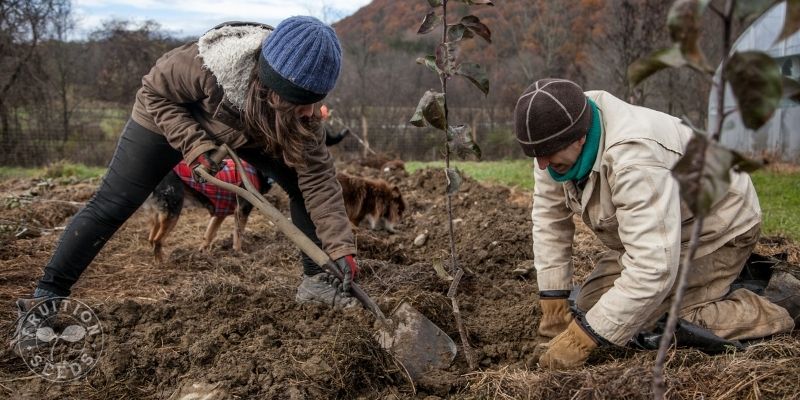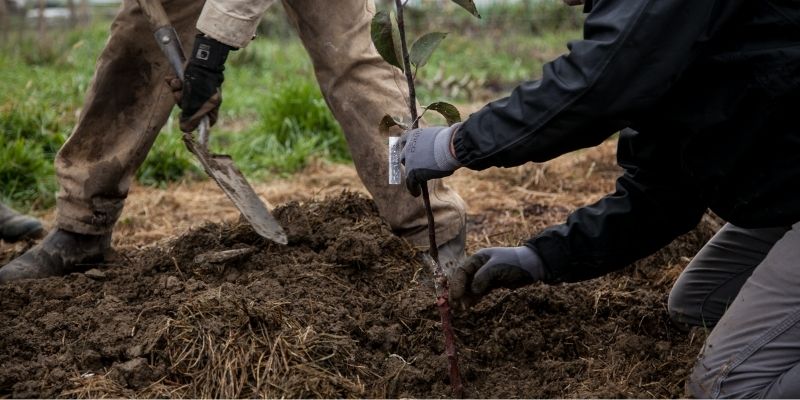Hooray!
The moment you’ve been waiting for, woooHooOOooOoooo!
So many generations of countless species will be so grateful for you ~
Goal: Friends, when planting trees, our goal is for the very bottom of the trunk to be level with the surrounding soil. (The bottom of the trunk is where the color changes to the root zone; usually this is evident by a distinct line between trunk and roots.)
Get a Handle on It! We’ve found it’s easiest to place the tree in the hole and determine the correct depth by running a stick, board, or straight tool handle across the top of the hole. (The change from root zone to bark on the trunk should be level with the bottom of the stick. This is where the tree was planted in the nursery and it should be planted at the same level again.) Using a stick or handle is especially helpful on hillside plantings where it can be less obvious where the grade is from the middle of the hole.
Dip your tree roots in water so each rootlet is marvelously moist before being planted.
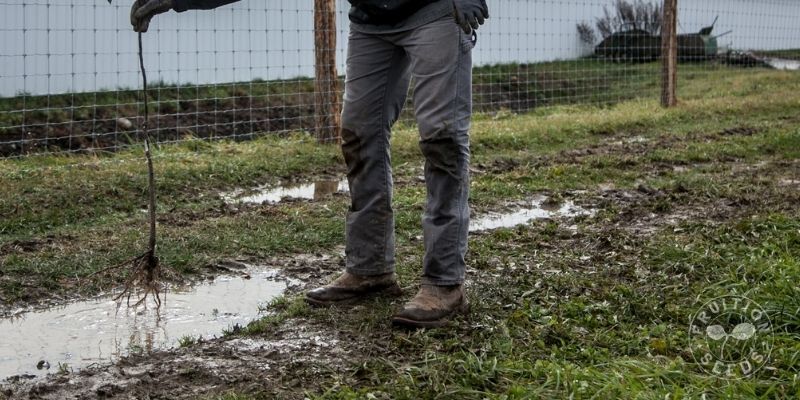
Prune any broken roots and spread them wide in your hole, so they’re all flowing outwards, starting out on the right track. Trees that are root bound or have circling roots will continue on like this once planted, affecting the stabilization of the tree as well as the ability for the roots to reach out to the nutrients needed. Typically this is not an issue for bare root trees (like the ones Fruition shares) that have not been potted before transplanting.
Double check the depth before you backfill your hole, holding the tree at the appropriate depth as straight as possible. Some trees will have more of a bend from the graft than others; and some varieties will have a more crooked nature than others. Most bends will straighten over time as the trunk expands. Perhaps this is just another way trees can help our species embrace diversity in our world ~
Backfill the soil into the hole. This is much more fun with two people because one person can hold the tree, the other backfill, and both inspect from different angles to make sure it’s being planted straight and at the correct depth. But totally possible for one person to do too!
Resist backfilling with ‘better’ soil or fertilizer, since additional nutrients can burn roots. Amendments produce the best results when mixed with compost and applied on top of the soil. The soil you backfill with should consist only of the the soil that came out of the hole, or else you risk your tree’s roots resisting growing beyond the hole.
Gently tamp the backfilled soil with your feet once all of the soil that came out is back in the hole, removing any potential air pockets. Air kills the roots and should be avoided in the hole as well as any exposed roots near the soil level. Tamping the soil down also stabilizes the tree while the roots take hold and helps avoid leaning after planting. The tree should feel stable in the soil, while at the same time not overly compacting the soil around it and damaging roots. Make sure the soil is right up against the trunk of the tree and there are no air gaps.
Triple check to make sure the tree is at the correct depth and none of the top roots are exposed. Way easier to fix now than in the future, and much better for the tree!
Create a ‘saucer’ around the tree ring, going around the perimeter of the hole, where water will drain during rain or watering. A circular water catchment that helps keep the water near the root zone rather than running off to another location.
Prune any broken branches back to the closest outward facing bud.
Hooray!
We planted a tree!
And the most critical part is yet to come ~
Fruition’s current online tree growing resources are focused on Apple Trees (and it is also true that Pears, Plums, Peaches, Apricots and Cherries require much the same site choice, planting, and basic care considerations!) On that note, we hope you'll enjoy Fruition's free full library of Growing Trees Resources. Also recommended are all books by the late Michael Phillips and the online resources at the New England Tree Fruit Management Guide. In the meantime, enjoy more Fruition tree growing resources:
Apple Tree Growing Guide
Fruit Q&Qs pre-recorded Webinar Library
and join us for future live Fruit Q&Q webinars here!
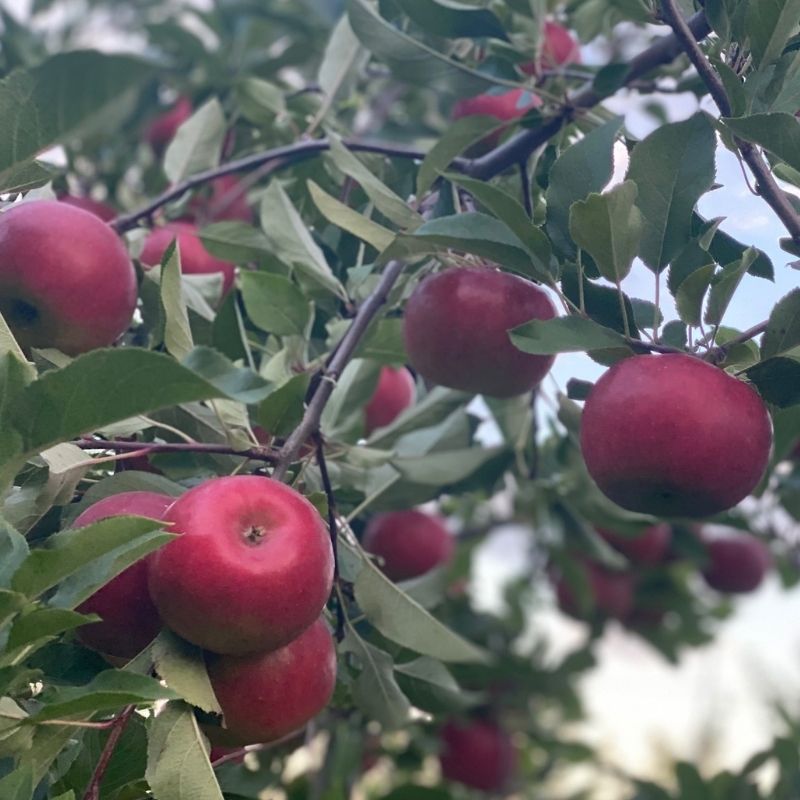
Be in the know:
Fruition's Fruit Tree Updates!
You'll receive seasonal tree insights & how-to's plus be the first to know about invitations to tree events on-farm and online!
Visit our newsletter website and subscribe to the 'Tree Updates' section
Enjoy our free online Apples & Organic Orcharding course and Tree Webinar Q&Qs Library in the meantime & don't be shy!
~When you join us, check your inbox for your welcome & access info! Stay tuned for our weekly organic gardening tips & inspiration, as well~

